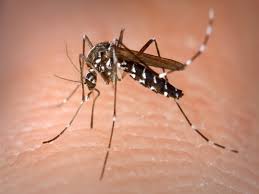To eliminate the disease, the government has introduced a new national malaria control policy.
New Delhi: In several corners of rural India, asymptomatic malaria remains a threat as it remains undetected due to Plasmodium infections that do not show signs of clinical symptoms. Although India has taken many steps to eliminate malaria, the cases of asymptomatic malaria continue to be dominant among the tribal groups in the rural belts of India.
In Odisha, malaria is majorly concentrated in some blocks of Malkangiri, Koraput, Kandhamal, Kalahandi and Rayagada which contribute to the endemicity of the districts. “In tribal areas of Odisha where the disease is endemic, the people living there get repeated exposure to infective mosquito bites. Sometimes the tribal people either overlook the symptoms or do not even manifest the symptoms as they have developed partial immunity against the parasites. However, they remain as a parasitic reservoir in the community and maintain the transmission chain by acting as the carrier,” Dr Kirti Mishra from Malaria No More-India told The Sunday Guardian.
To eliminate the disease, the government has introduced a new national malaria control policy. The case management was expanded through the mobilization of volunteer community workers who were trained in the use of Rapid Diagnostic Kits, the administration of Artemisinin-based Combination Therapy, and the adoption of Long-Lasting Insecticide-treated Nets (LLINs). In addition, Prime Minister Narendra Modi endorsed a strategy and roadmap to eradicate malaria in the entire Asia-Pacific region by 2030 in November 2015 along with 17 other world leaders. India also promised to accomplish this objective by 2027, three years earlier than the regional and global deadline. However, many volunteers and ASHA workers have stated that due to difficult terrain, maintaining the quality of the blood slides while traveling is a hurdle. States such as Jharkhand, Madhya Pradesh, Odisha, Chhattisgarh, and northeast states like Mizoram, Meghalaya, Tripura, and Arunachal Pradesh contribute to most of the cases. The National Vector-Borne Disease Control Programme (NVBDCP) has stated that up until April 2022, there was an 8.3% rise in the number of blood slides examined compared to April 2021. However, the dynamic nature of the health problem along with several other difficulties such as maintaining the quality of the blood slides and carrying the samples in difficult terrain, and convincing people to take the test even though they do not show any symptoms are some of the challenging tasks.
Uttam Rakshit, who has opened a hospital in Kondagaon, Chhattisgarh, told this paper that eliminating malaria has continued to be challenging due to asymptomatic malaria. He said, “The government has spent crores of money to eliminate malaria, however, unless we eliminate asymptomatic malaria, all the money would be wasted.” As per the Centers for Disease Control and Prevention, the direct costs (such as disease, treatment, and early death) are estimated to be at least $12 billion every year worldwide.
He further added, “As the people do not show any symptoms of malaria or physical discomfort, they do not get tested for malaria. Therefore, we have found cases of asymptomatic malaria in Aboojmarh region of Chhattisgarh. The majority of the cases one finds are asymptomatic ones and as a result, the transmission cycle is continued.”
The malaria symptoms are mild and thus often ignored by family. Speaking of the symptoms of malaria, Dr Shashikant Nigam, consultant Internal Medicine, Apollo Hositals, Ahmedabad, said, “Malaria typically comes with high-grade fever, severe chills, and rigors. In some cases, all these features are absent and the patient can still have malaria. In the long run, malaria can cause weight loss, severe anaemia and jaundice. In some cases, kidney failure and respiratory failure can occur.”

